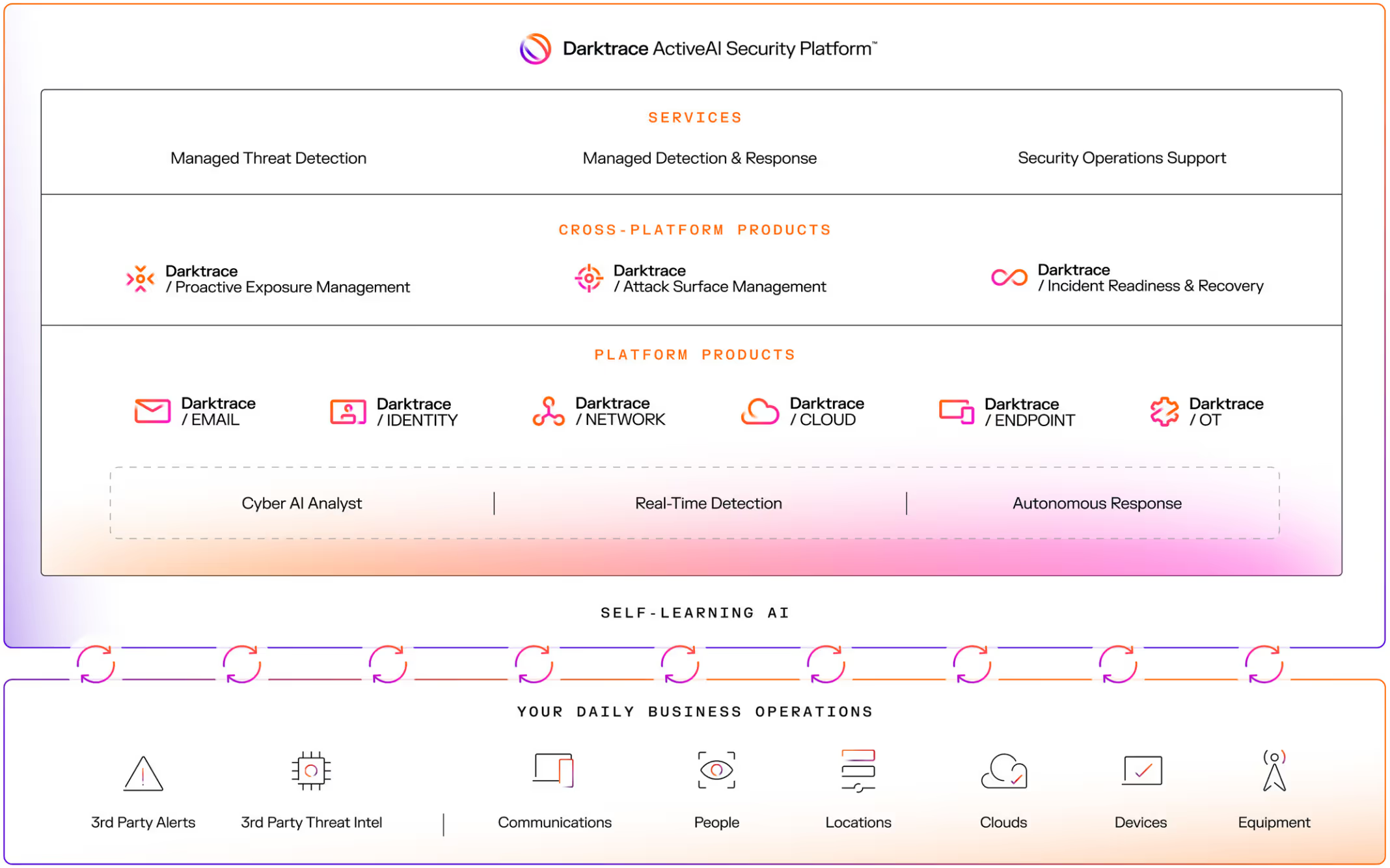There’s a global paradigm shift underway, as we enter the era of AI, that is changing both the way businesses operate and the landscape that they operate within. Our customers are dealing with the impact that AI and automation, as well as the commodification of cybercrime-as-a-service, are having on the threat landscape. Attacks that once took a human weeks or months to propagate can now be done much faster, more effectively, and on a greater scale. Earlier this year, we released our 2024 State of AI Cybersecurity Report which found that 74% of security professionals surveyed agree that AI-powered cyber threats are already having a significant impact on their organizations.
On the other hand, we’ve never been more optimistic that the application of AI in cybersecurity is an essential enabler of innovation. That’s why Darktrace has been building a new model for cybersecurity since our founding in 2013. We remain squarely focused on innovating at the crossroads of AI and cybersecurity to better help our customers build resilience and stay one step ahead of changing threats. We’ve seen first-hand how AI can transform security operations by automating alert triage and freeing up valuable human time to focus on proactively hardening defenses.
As we continue this journey in support of our customers, it’s important that our corporate identity keep pace with our ambitions. We know that the world is a dynamic place, and we believe that a proactive approach to security is the best way to help our customers realize their innovation potential in this new era. To achieve this, we’ve refocused our mission to be the essential cybersecurity platform using AI to proactively defend against novel and known threats.
This week, we introduce a bold new brand promise that encapsulates our focus on championing the defenders who protect companies every day, while also pushing beyond the boundaries of conventional thinking to innovate ahead of current challenges. Defend Beyond – our new brand platform -- achieves just that. More than a brand tagline, Defend Beyond embodies the essence of Darktrace’s ability to harness the power of AI to help our customers to stay ahead of constantly changing cyber threats and threat actors. Take a closer look at this promise through our Defend Beyond brand video.
In addition to this redefined corporate positioning, Darktrace has continued to innovate for our customers. In April, we announced the Darktrace ActiveAI Security Platform™ – an
industry leading, AI-native offering that can visualize and correlate threats across the entire enterprise, provide more complete visibility to help mitigate risk, and automate time-intensive tasks to support a preventative and proactive approach to delivering cyber resilience. This platform-based approach allows our customers to be on the leading edge of AI in cybersecurity, while also reducing operational costs through security stack consolidation. Finally, as security operations teams struggle to keep up with the sheer volume of alerts, the Darktrace platform delivers industry-leading, investigative AI to automate the triaging of incidents and further save human time in the process.

This week, we go a step further as we unveil additional changes to our product portfolio including packaging and product naming. After extensive analysis and customer feedback, we’ve taken steps to streamline and simplify our product packaging. Specifically, our flagship products of Darktrace DETECT™ and Darktrace RESPOND™, along with Cyber AI Analyst™, have now been combined and serve as the foundation of the Darktrace ActiveAI Security platform. This approach ensures that customers benefit from the breadth of our real-time detection, autonomous response, and investigative AI capabilities in the easiest approach possible.
These foundational capabilities can be purchased through any one of the Darktrace primary products, which have been renamed as follows to better align to the challenges our customers are seeking to solve:
- Darktrace / CLOUD™, delivering cyber resilience through real-time and intelligent multi-cloud security
- Darktrace / EMAIL™, stopping sophisticated threats up to 13 days faster through revolutionary email security.
- Darktrace / NETWORK™, combatting unknown threats with the most advanced Network Detection and Response.
- Darktrace / OT™, redefining risk management with the most comprehensive solution purpose built for critical infrastructure.
- Darktrace / IDENTITY™, unifying visibility and control of identity threats across your entire digital enterprise.
- Darktrace / ENDPOINT™, providing advanced threat detection and response across devices, anywhere.
Customers can start their Darktrace journey with any of these primary products, realizing the additive benefits of the platform as their deployment grows. Cross platform products deliver value across the platform while also providing unique capabilities within their specific categories. We have renamed these products to better reflect the functionality of our offerings:
- Darktrace PREVENT/E2E is now Proactive Exposure Management, stopping vulnerabilities from becoming reality.
- Darktrace PREVENT/ASM is now Attack Surface Management, identifying and protecting unknown exposed assets.
- Darktrace HEAL is now Incident Readiness & Recovery, uplifting security teams to reduce the impact of an incident.
At Darktrace, supporting our 9,700+ customers is the heart of our purpose and mission. We are inspired by the work they do every day to keep their organizations, and the world, moving in the face of constant change. Over the last year, we've continuously innovated across our products, services, and go-to-market strategy to enable them to stay ahead. The new positioning we're unveiling today is designed to simplify the experience for our customers and reflects our bold ambition to enable defenders today and for the future. I hope you join me in celebrating this evolution as we strive to defend beyond.
































.jpeg)



